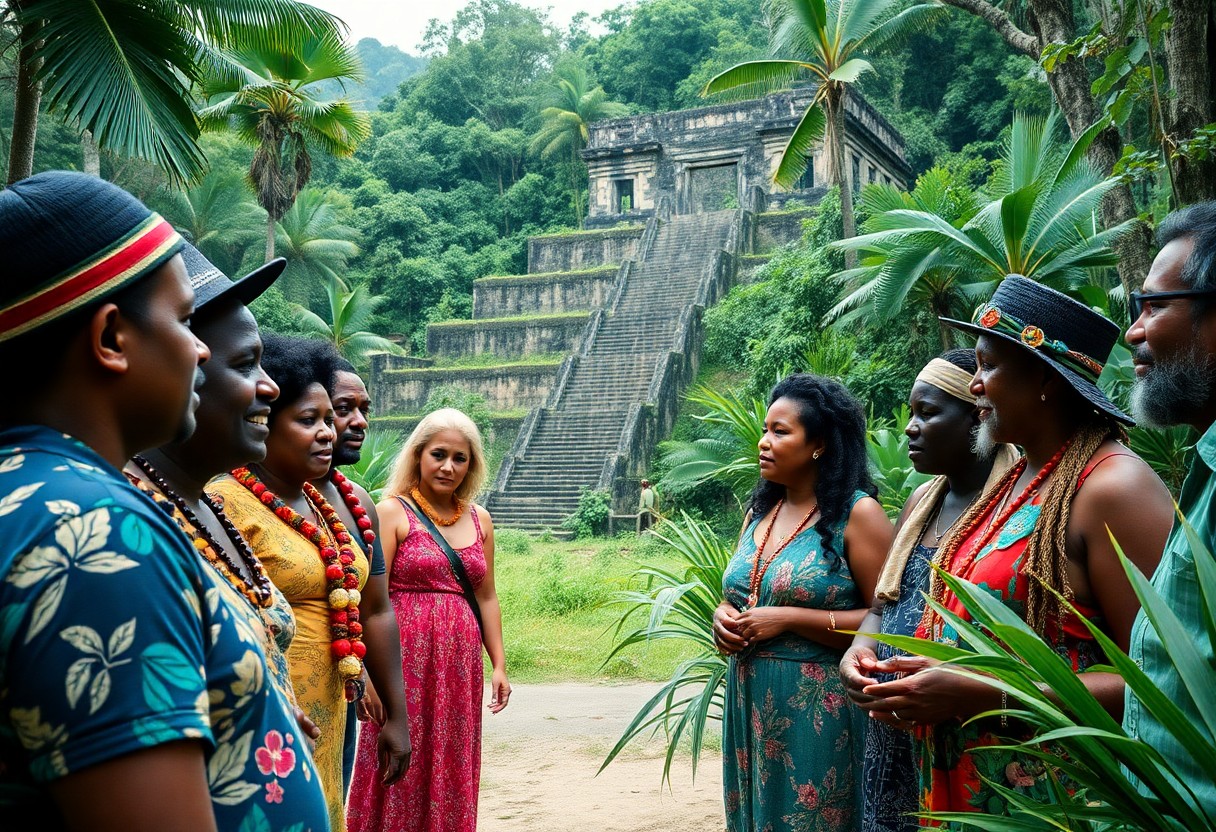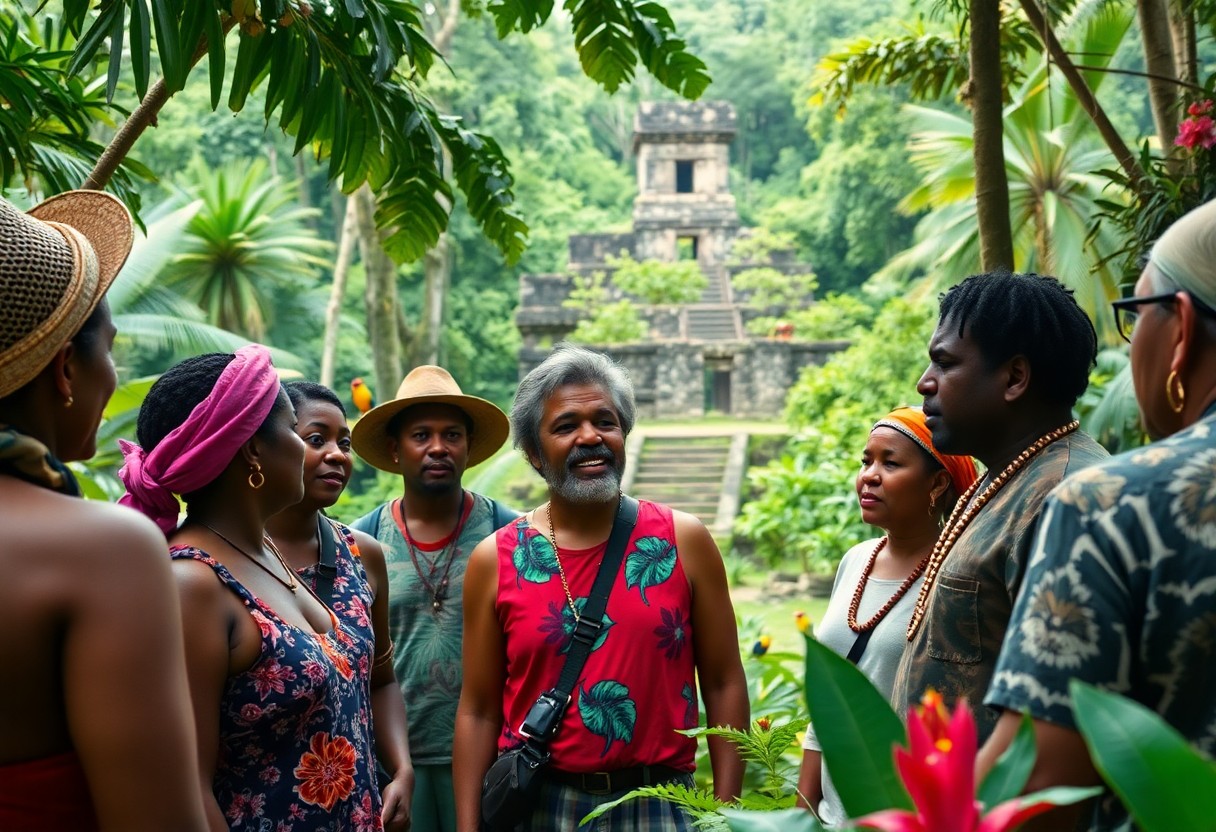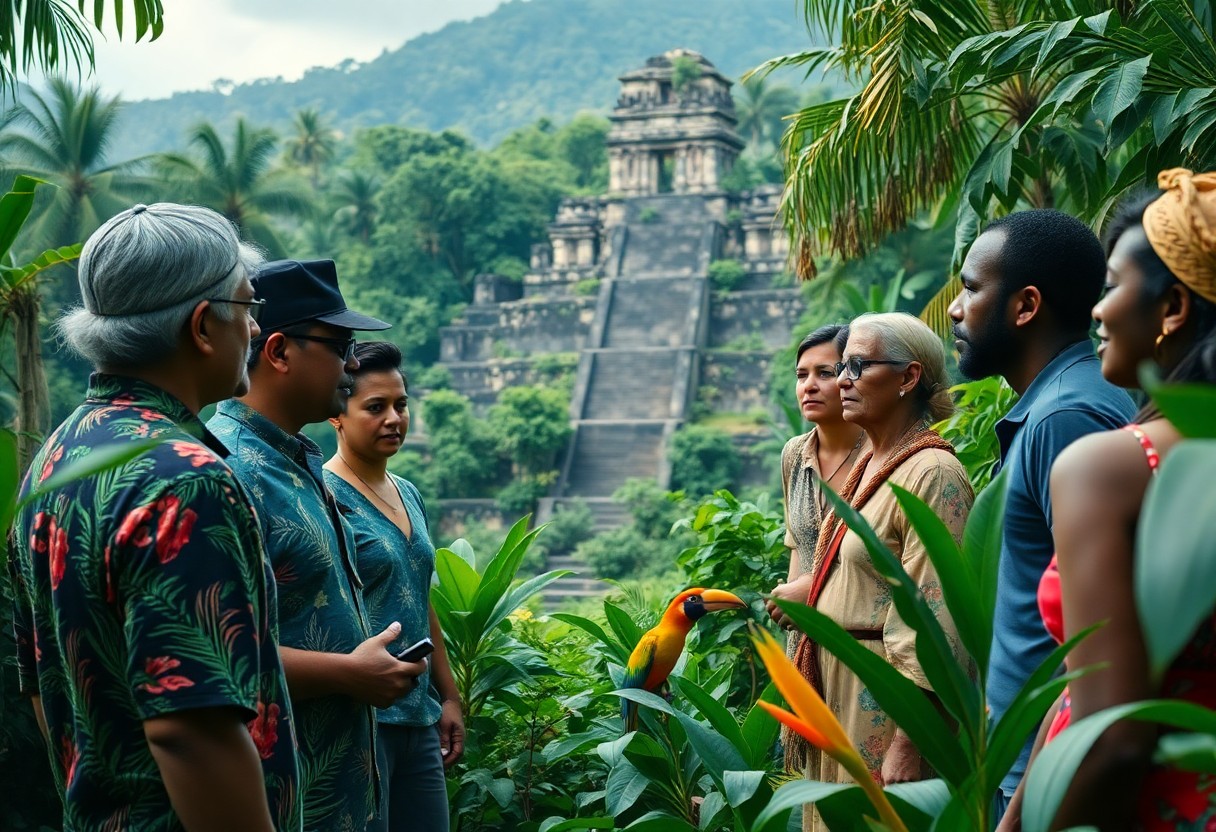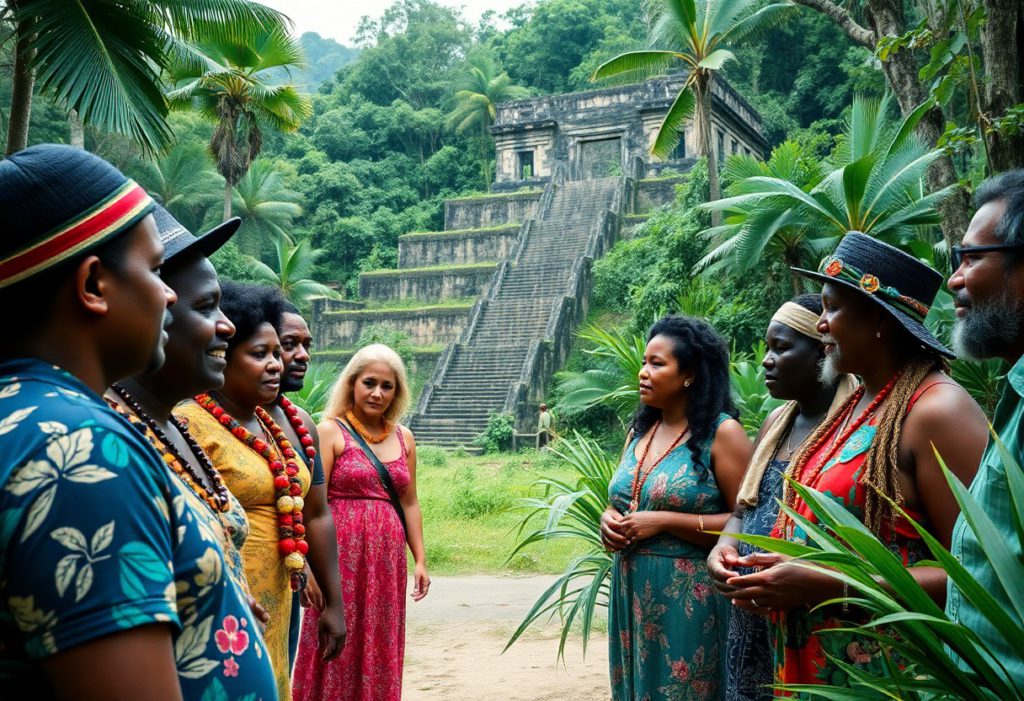Throughout the centuries, Belize has evolved into a captivating travel destination that captivates travelers with its exceptional blend of cultural diversity and breathtaking natural wonders. Here, you will immerse yourself in a nation where English is the official language, yet a vibrant tapestry of linguistic variety flourishes among Creole, Spanish, and Mayan communities. Your adventure will reveal an intricate historical narrative that spans ancient Mayan civilizations, the enduring influence of British colonialism, and a lively modern culture. The country’s ecological richness is equally astonishing, featuring rare ecosystems such as the world’s second-largest barrier reef and lush tropical rainforests filled with endangered species. With its unique linguistic diversity and extraordinary environmental treasures, Belize offers an unparalleled experience through its exceptional Central American charm.
Discover the Linguistic Diversity that Defines Belize
Belize is characterized by a captivating tapestry of linguistic diversity, offering a remarkable multilingual landscape that reflects its rich cultural heritage. The nation showcases a harmonious coexistence of various languages, transforming communication into an exciting and dynamic experience throughout this vibrant Central American country. This linguistic variety not only enhances social interactions but also deepens the cultural fabric of Belize, inviting you to engage meaningfully with its diverse communities. As you meet locals, you will appreciate how language serves as a bridge connecting different cultures, fostering understanding and mutual respect among its inhabitants.
Exploring the Integral Role of English in Belizean Society
At the core of Belize’s linguistic diversity is English as the official language, a legacy stemming from its British colonial history. You will find English widely utilized in government, education, and media, acting as a unifying platform for the diverse population. This prevalent use of English facilitates communication among various ethnic groups, promoting a shared understanding and nurturing a sense of national identity that transcends cultural divides. The prominence of English in Belize enhances its appeal as a tourist destination, making it accessible and inviting for international visitors who seek to explore this unique cultural landscape without language barriers.
Understanding Spanish’s Cultural Impact in Belize
The linguistic dynamics in Belize also include Spanish, which is predominantly spoken by Hispanic communities and immigrants from neighboring countries. You will observe significant Spanish-speaking populations, particularly in border regions and urban centers, reflecting the strong cultural ties to Central America. As the second most widely spoken language, Spanish plays a critical role in connecting Belize to its Central American neighbors, facilitating cultural exchanges and cross-border interactions. This linguistic presence enriches the cultural landscape, allowing for a vibrant blend of traditions and practices that mirror the region’s historical connections and shared heritage.
The Distinctive Nature of Creole in Belize
Belizean Kriol, or Spanish Creole, represents a distinct linguistic blend that resonates throughout the country. This language has developed from historical interactions between African and European populations, embodying the essence of Belize’s multicultural heritage. Creole serves as a primary means of communication for many Belizeans, capturing the dynamic cultural interactions that define the nation. It is a lively and expressive language that conveys the rich historical experiences and narratives of the diverse communities within Belize, allowing for a deeper connection to the local culture and its unique stories.
Exploring the Richness of Garifuna Language and Culture
Diving deeper into Belize’s linguistic landscape, Garifuna emerges as another fascinating language community. You will encounter this Arawakan language spoken by indigenous populations along the southern coastal regions. Garifuna carries profound cultural significance, representing the resilience and heritage of Afro-indigenous communities. You will appreciate how this language preserves unique traditions, songs, and historical narratives that contribute to the vibrant tapestry of Belizean society. The rich cultural expressions of the Garifuna people, including their music and dance forms, further enrich the nation’s diverse cultural offerings, making their festivals a celebration of identity and history.

Understanding Belize’s Colonial History and Path to Independence
Belize’s colonial history is a complex tapestry woven from European influences and indigenous resilience. Initially claimed by Spain, the region came under substantial control of British settlers, who established logging settlements that transformed the territory into a strategic outpost. These British colonizers laid the groundwork for economic systems centered around wood extraction, ultimately leading to the formal establishment of British Honduras as a colony in 1862. This historical context provides valuable insight into the socio-political dynamics that shaped modern Belize, reflecting the struggles and triumphs of its people.
Examining the Historical Context of British Honduras
During its time as British Honduras, Belize experienced a unique confluence of cultural interactions that significantly shaped its identity. You would witness the coexistence of British settlers alongside Maya populations, descendants of African slaves, and various ethnic groups. The colonial period brought about significant demographic transformations, as economic activities evolved from logging to agricultural production, leading to a diverse social landscape. This remarkable history enriches your understanding of modern Belizean identity, illustrating how various cultural narratives and traditions coexist and contribute to the nation’s unique character.
Charting the Path to Independence in Belize
In tandem with the political movements of the mid-20th century, Belize’s journey to independence was marked by diplomatic negotiations and regional tensions. You’ll appreciate how influential political leaders like George Price skillfully navigated complex international relationships, particularly with Guatemala, which laid territorial claims on Belizean land. The journey to independence was fraught with challenges, involving extensive negotiations with both the British government and neighboring countries. Achieving independence on September 21, 1981, marked a peaceful transition from over a century of British colonial rule, underscoring the strategic diplomacy and national determination that characterized Belize’s emergence as a sovereign state.

Diving into Belize’s Unique Ecosystems and Biodiversity
In Belize, nature unveils an extraordinary array of ecological diversity that is truly unrivaled anywhere else in the world. The country’s geographical position creates a remarkable intersection of ecosystems, ranging from coastal marine environments to dense tropical forests. You’ll discover landscapes that seamlessly integrate Caribbean marine habitats with lush inland terrains, offering a stunning ecological experience that positions Belize as a global biodiversity hotspot. This unique combination of environments invites exploration and appreciation for nature’s intricate beauty and the vital role it plays in sustaining life.
Unveiling the Marvels of Coral Reefs in Belize
As you navigate Belize’s coastline, you’ll be astounded by the world’s second-largest barrier reef system, extending approximately 300 kilometers. This magnificent marine ecosystem is home to an astonishing array of coral formations, providing a habitat for numerous marine species. Your underwater adventures will reveal vibrant coral gardens, intricate underwater landscapes, and a complex marine environment that supports both ecological balance and breathtaking visual diversity. The preservation of this reef system is critical for maintaining marine health and promoting sustainable tourism, ensuring future generations can enjoy its wonders.
Immersing Yourself in the Essence of Tropical Rainforests
At the heart of Belize, tropical rainforests cover nearly 60% of the country’s landmass. You’ll find yourself enveloped in lush, verdant landscapes teeming with exotic plant and animal life. These forests represent a vital ecological zone, serving as a sanctuary for numerous endangered species while maintaining essential environmental processes. To truly appreciate Belize’s rainforests, it’s essential to understand their complex ecological structure. These multilayered ecosystems contain diverse vegetation strata, from the forest floor to the towering canopy. You’ll discover intricate relationships between plants, insects, mammals, and microorganisms that create a delicate web of life, demonstrating the invaluable role rainforests play in climate regulation and resource provision.
Exploring the Rich Wildlife Biodiversity of Belize
The intersection of reefs and forests creates an extraordinary wildlife sanctuary where you’ll encounter a remarkable array of species diversity. Belize is home to over 500 bird species, numerous mammals, and an impressive variety of reptiles and amphibians. Your journey through these diverse ecosystems will unveil a living museum of biodiversity. Yet, Belize’s wildlife represents more than just a count of species; these ecosystems are integral to global conservation efforts. You’ll find endangered species like jaguars, howler monkeys, and marine mammals finding refuge in these protected environments. The intricate balance of predator-prey relationships, migration patterns, and habitat preservation positions Belize as a global model for ecological conservation and biodiversity management.

Embracing Belize’s Cultural Mosaic
Despite its small size, Belize showcases a vibrant tapestry of ethnic diversity, featuring an extraordinary blend of cultures, including Creole, Garifuna, Maya, Mestizo, and European descendants. You can explore a society where multiple languages coexist and traditions interweave, creating a distinctive national identity that celebrates differences while fostering social harmony. This multicultural landscape offers you an extraordinary glimpse into how diverse communities can live and thrive together, enriching the national narrative and contributing to the overall cultural richness of Belize.
Participating in the Colorful Multicultural Festivals of Belize
Any visitor to Belize will be enchanted by the colorful and energetic festivals that showcase the nation’s rich cultural heritage. You’ll have the chance to participate in celebrations like Garifuna Settlement Day, where traditional music, dance, and historical reenactments unite communities in a spectacular display of cultural pride and unity. These festivals not only provide vibrant entertainment but also serve as vital platforms for preserving cultural traditions, allowing both locals and tourists to engage with Belize’s vibrant cultural identity while learning about its history and customs.
Indulging in the Exquisite Flavors of Belizean Cuisine
The culinary landscape of Belize reflects its multicultural roots, offering you a delectable fusion of flavors from various ethnic traditions. You’ll encounter dishes that blend Maya, Creole, Caribbean, and Central American influences, creating a unique gastronomic experience that tantalizes your taste buds. A deeper exploration of Belizean cuisine reveals extraordinary culinary traditions that are one-of-a-kind. You’ll discover dishes like gibnut (a local game meat), rice and beans served with stewed chicken, and seafood specialties that highlight the country’s diverse cultural influences. Each recipe narrates a story of migration, adaptation, and cultural exchange, adding depth to your culinary exploration.
Experiencing the Dynamic Soundscape of Belizean Music
Above all, Belizean music serves as a dynamically evolving expression of cultural fusion. You’ll encounter rhythms that blend Caribbean, African, and Latin American influences, creating a unique soundscape that reflects the nation’s diverse heritage. For instance, you’ll be captivated by the rich musical traditions of Belize, which encompass genres like Punta, Brukdown, and Reggae. These musical styles not only offer entertainment but also play a crucial role in preserving cultural memories and narratives, serving as powerful mediums for cultural expression and identity in Belize.
Unveiling Belize’s Tourism Opportunities and Natural Wonders
Many travelers are drawn to Belize for its extraordinary combination of natural beauty and cultural richness. You’ll discover a destination that offers unparalleled tourism experiences, ranging from pristine Caribbean coastlines to lush tropical rainforests. The country’s diverse landscape provides visitors with unique opportunities to explore ancient Mayan ruins, vibrant marine ecosystems, and breathtaking national parks that showcase Belize’s remarkable biodiversity. This synergy of natural and cultural attractions establishes Belize as a must-visit destination for both adventure seekers and culture enthusiasts alike.
Embarking on Thrilling Adventure Tourism in Belize
Tourism in Belize transforms the dreams of adventure seekers into reality. You can explore world-class cave systems, navigate challenging jungle terrains, and engage in exhilarating activities such as zip-lining, river kayaking, and mountain biking. The diverse topography of Belize ensures that you’ll find heart-pounding adventures that push your limits while immersing you in stunning natural environments. Each adventure not only provides excitement but also fosters a deeper connection with Belize’s breathtaking landscapes and diverse ecosystems, enriching your travel experience.
Embracing Eco-Tourism for Sustainable Exploration
Throughout Belize, eco-tourism embodies a sustainable approach to exploring the nation’s extraordinary environmental treasures. You’ll encounter carefully managed conservation areas that protect rare wildlife and preserve delicate ecosystems, offering immersive experiences that connect you directly with the intricate systems of nature. With a strong commitment to environmental preservation, Belize stands as a global leader in sustainable tourism. You’ll discover numerous protected areas, such as the Cockscomb Basin Wildlife Sanctuary, which provide unparalleled opportunities to observe diverse wildlife, including jaguars, tropical birds, and unique plant species. The country’s dedication to maintaining ecological balance ensures that your visit supports conservation efforts while delivering unforgettable, responsible travel experiences.
Tackling Challenges and Promoting Preservation in Belize
Despite its stunning natural beauty, Belize faces significant challenges that threaten its ecological and cultural integrity. Environmental degradation, economic pressures, and global climate change pose substantial risks to the nation’s delicate ecosystems and social structures. You’ll find that these challenges necessitate strategic, comprehensive approaches to protect and sustain Belize’s unique natural and cultural heritage. The ongoing efforts to address these pressing issues are crucial for the future well-being of Belize and its inhabitants.
Recognizing Environmental Threats to Biodiversity in Belize
The preservation of Belize’s biodiversity has become increasingly complex. Deforestation, coral reef bleaching, and rising sea levels directly impact your understanding of the country’s environmental vulnerability. It’s essential to recognize that these threats jeopardize not only wildlife but also the entire ecological balance of this remarkable nation. Understanding these challenges is vital for developing effective conservation strategies that ensure the survival of Belize’s unique ecosystems and the diverse species that inhabit them.
Cultural Preservation Amidst Globalization Challenges
For Belize, maintaining cultural diversity is a delicate balancing act. Indigenous languages, traditional practices, and multicultural identities face the risk of erosion in a rapidly globalizing world. You’ll observe how communities strive to protect their unique heritage against the pressures of modernization. However, cultural preservation goes beyond mere conservation. Active community engagement, educational programs, and intergenerational knowledge transfer are essential strategies you’ll witness in action. Young Belizeans increasingly become champions of their own cultural narratives, documenting languages, reviving traditional crafts, and celebrating the rich tapestry of their multiethnic society. This proactive approach ensures cultural continuity while allowing for dynamic, contemporary expressions of identity that honor the past.
Discovering Belize: A Destination of Exceptional Richness
Overall, you’ll find Belize stands as a remarkable destination where linguistic diversity, rich historical layers, and extraordinary ecological landscapes converge. You can appreciate how its unique blend of English, Spanish, Kriol, and Mayan languages reflects its complex cultural heritage. Your exploration reveals a country where ancient Mayan civilizations intersect with colonial influences and vibrant modern identities. As you delve into Belize’s biodiversity, you’ll uncover an ecological treasure trove featuring pristine rainforests, coral reefs, and an impressive array of wildlife, making this small nation a global conservation jewel. Understanding Belize means recognizing its extraordinary capacity to preserve cultural complexity while maintaining ecological integrity, inviting you to experience the magic of this unique Central American paradise.
Answers to Common Questions About Belize
Q: What unique linguistic characteristics make Belize stand out among Central American countries?
A: Belize distinguishes itself as the only English-speaking country in Central America, with English serving as its official language. While Spanish, Kriol, and Mayan languages are also prevalent, English reflects the nation’s historical connection to British colonial heritage. This linguistic uniqueness not only facilitates international communication but also sets Belize apart from its neighboring Spanish-speaking nations, enriching the cultural tapestry of the region.
Q: How does Belize’s historical background differ from other countries in the region?
A: Belize’s history is exceptional as it was the only British colony in Central America, gaining independence in 1981. Unlike its neighbors, Belize experienced a peaceful transition from British rule and has maintained a democratic governance system. The country’s multicultural composition, including Creole, Garifuna, Maya, and Mestizo populations, creates a rich and diverse social landscape that distinguishes it from other regional countries, contributing to a unique national identity.
Q: What makes Belize’s biodiversity particularly significant on a global scale?
A: Belize boasts extraordinary ecological diversity, with approximately 60% of its land area designated as protected wilderness. The Belize Barrier Reef, recognized as the second-largest coral reef system globally, supports an incredible marine biodiversity. Additionally, the country’s rainforests are home to numerous endangered species, such as jaguars, howler monkeys, and countless tropical birds, making it a global hotspot for conservation and ecological research. Belize’s commitment to preserving these natural resources is vital for the health of the planet.
The Article What Makes Belize Unique? Language, History, and Biodiversity appeared first on Belize Travel Guide
The Article Belize’s Unique Language, History, and Biodiversity Explained Was Found On https://limitsofstrategy.com



Belize truly presents an intriguing mosaic of culture and natural beauty, and you’ve captured this essence beautifully. The fact that the official language is English, yet the country is a vibrant melting pot of Creole, Spanish, and Mayan languages, speaks volumes about its rich tapestry of identity. I remember my visit to Belize, where I was enchanted not just by the breathtaking barrier reef but also by conversations with locals who effortlessly switched languages, sharing stories laced with historical references and cultural pride. It highlighted how language is not just a means of communication but a vessel for cultural heritage.
It’s great to hear you had such a memorable experience in Belize. You’re spot on about how language weaves into the fabric of culture there. It’s fascinating to see how people navigate between English, Creole, Spanish, and even various Mayan languages so fluidly. Those conversations you had must have been really enriching.
Belize truly seems like a treasure trove of cultural and natural wonders. Your insights about the linguistic diversity paint a vivid picture of a nation where language serves not just as a means of communication, but as an essential thread that weaves together its rich heritage. It’s fascinating to consider how this diversity reflects the broader themes of identity and community in Belize.
It’s interesting to think about how language shapes our understanding of culture in Belize. Each of the languages spoken—from English, Spanish, and Creole to various Mayan and Garifuna languages—offers a unique lens through which to view the country’s diverse communities. This linguistic tapestry doesn’t just highlight communication; it reflects the historical journeys, struggles, and resilience of its people.
“I’m glad you found the insights compelling! To explore more about Belize’s vibrant culture and breathtaking landscapes, check out this link for an unforgettable journey.”
https://anovelapproach.co.uk/emailoctopus
You bring up a fascinating point about how language influences our perspective on culture in Belize. It’s true that each language spoken there not only serves as a tool for communication but also carries the weight of history and identity for the communities.
It’s great to hear your thoughts on Belize’s linguistic diversity. Each language spoken here really does shape the community’s identity in unique ways. For instance, you can see how Creole and Spanish not only reflect the country’s colonial history but also the blending of cultures over time. When you walk through Belize City or rural areas, you notice how these languages create connections among people, each conversation adding layers to the cultural fabric.
Thank you for your thoughtful comment! If you’re interested in exploring Belize’s vibrant culture and stunning landscapes further, check out this guide that delves deeper into its unique heritage and experiences.
https://anovelapproach.co.uk/VideoLeap
You’ve captured the essence of Belize’s linguistic landscape beautifully. The way Creole and Spanish intertwine not just as means of communication but as vessels of identity is fascinating. It’s interesting to see how the nuances in language reflect the experiences of the people. For instance, the switch between English and Creole during conversations often showcases a sense of familiarity and comfort within communities, while Spanish conversations can evoke a connection to the region’s broader cultural heritage.
Absolutely! To dive deeper into Belize’s rich culture and breathtaking scenery, take a look at this insightful guide that showcases its unique heritage and experiences. You’ll love what you find!
https://anovelapproach.co.uk/FaceTune
It’s so true—the linguistic diversity in Belize is a real gem! Each language tells a story and carries a piece of the nation’s history, shaping how communities connect and relate to one another. Whether it’s English, Spanish, or one of the many Mayan languages, each adds layers to the cultural fabric. It’s intriguing to think about how these different languages not only reflect personal identity but also influence social dynamics. People often switch seamlessly between languages or dialects depending on who they’re with, which creates a rich tapestry of communication that feels really unique. It’s like being part of a living dialogue that invites everyone to contribute their voice. What’s been your experience with languages?
You’ve captured an essential aspect of Belize’s identity—the way language shapes and reflects its diverse heritage. The linguistic landscape here really is fascinating. With English as the official language, we also see a vibrant mix of Spanish, Kriol, Belizean Sign Language, and various Maya languages being spoken daily. Each language carries its own stories and traditions, contributing to the larger tapestry of Belizean culture.
It’s fascinating how Belize’s rich tapestry of languages and cultures adds layers to its charm as a travel destination. The coexistence of English, Creole, Spanish, and Mayan languages reflects a historical narrative that is rarely seen in such a compact geographical area. I think this linguistic diversity not only enhances the cultural experience for travelers but also speaks volumes about the country’s ability to embrace various influences throughout its history.